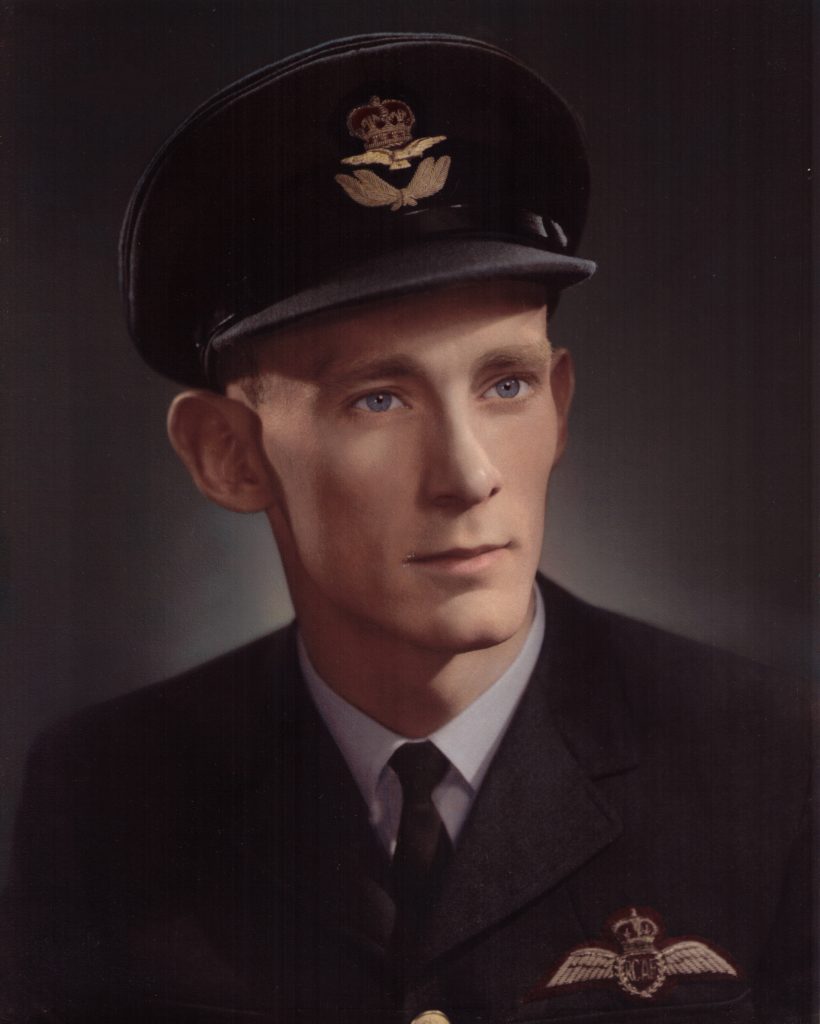Estimated reading time 7 minutes, 6 seconds.
From his first training flight as a Royal Canadian Air Force (RCAF) reserve pilot in the 1950s until his recent death at age 85, the late Bob Hewitt was rarely far from an airworthy aircraft with an iconic place in Canada’s aviation history.

Hewitt, who died peacefully at his home in Woodstock, Ont., on Dec. 30, 2019, was founding president of the Canadian Harvard Aircraft Association (CHAA) in Tillsonburg and a founder of the Jet Aircraft Museum in nearby London, Ont.
“He had a real sense of history,” said Pat Hanna, a fellow pilot and past president of the CHAA.
“So many of these aircraft were scrapped and used for the metal and things like that. He had a vision and a passion to keep them flying for as long as there were parts available.”
Hewitt had a close personal connection to North American Harvards, the RCAF’s advanced trainer during the Second World War and one of the planes he flew in the Air Force reserves.
He also flew de Havilland Tiger Moths and Canadair CT-133 jets, and after retirement Hewitt developed a passion for preserving these aircraft along with the memories of pilots who flew them.
“It was very important to him that they didn’t become dust-collecting artifacts in a stagnant museum,” said Dave Hewitt, Bob’s son and CHAA pilot.
“[He wanted to ensure] they were actually flown and demonstrated — so people could see, hear, smell and feel the history.”
History in the making
Hewitt acquired his first Harvard in 1968, buying it from an owner who kept it in pieces in a chicken barn for eight years, said Dave.
Together with his friend Norm Beckham, Hewitt acquired three more Harvards over the next decade, and by the mid-1980s, several community volunteers near Woodstock were helping service, maintain and fly the aircraft.
Hewitt was a natural leader with a quiet demeanour but a magnetic personality, always able to recruit helpers for tasks that pulled them outside their comfort zones.
“He was just that type of guy,” said Dave. “People just said, ‘I see where you’re going and I’m going to be part’ — whether it was business, whether it was his hobby, farming.
“My dad … never did anything at real small scale. But it was amazing how people would flow out of the woodwork just to be a part of what he was doing.”
A meeting with Hewitt around 1975 prompted Leonard Fallowfield, another founding member of the CHAA, to get his pilot’s licence and learn to fly the iconic aircraft.
“I got my licence the next year and got to fly Harvards for quite a few years,” said Fallowfield. “It was him [Hewitt] that inspired me to get in there.”
Today, the CHAA has five Harvard aircraft (three in restoration) at Tillsonburg Regional Airport and one North American Yale, a predecessor to the Harvard with a fixed undercarriage.
Only 50 Harvards are still flying in Canada, and CHAA has the largest airworthy fleet in all of North America.
“He didn’t want it to just become a page in a history book,” said Hanna. “He wanted it to be a tangible thing they could actually see and they could actually fly.”
Jet Aircraft Museum
Hewitt’s role in creating the Jet Aircraft Museum (JAM) was similar to his motivations for helping launch the CHAA.
“His love for the T-33 is an absolute mirror of the Harvard,” said Dave Hewitt.
“When the military announced they were disbanding surplus T-33s in the early 2000s, that’s when Dad latched onto it and said, ‘This is the next plane that needs its legacy preserved and maintained for generations to come.’ ”
Hewitt and other volunteers began laying the groundwork for JAM in 2007, after the Canadian government offered six CT-133 aircraft — the world’s first purpose-built jet trainer– with favourable financing.
This two-seat trainer, also known as the “T-Bird,” was built by Canadair in Montreal and served in the Canadian Armed Forces for roughly half a century.
JAM is a volunteer-run non-profit, hangared at London International Airport and devoted to preserving and flying military jet aircraft from Canada and other countries, including the de Havilland Vampire and the CT-114 Tutor.
Hewitt was notoriously hard on himself, with high standards for his own performance and for those around him. He expected volunteers to do a job right, and praised them when they did.
When Hewitt was in his early 70s and caught himself missing mechanical checks here and there, he stopped flying. But he maintained an avid interest in the organizations he helped create.
“His legacy is not the preservation of history,” said Dave, “but bringing people together in a common cause to preserve history.”
My recollection from VT-40 Squadron in the fifties, four Harvard aircraft took off from Shearwater on the way to offshore Peggy’s Cove,to practice follow the leader, we happened to be the last in line and the Harvard in front of us pulled up inadvertently, it was close.
T-bird was different, stick-over, pedal inn and do barrel rolls as long as you wanted.
Normal T-bird circuit for landing was 300-FT, but one day we had a high pressure fuel cock problem and there was a loud Bang, Bang.
We landed OK but the landing circuit was changed to 1000-FT.
Thank you Bob for the ride in the Harvard you and my Dad Raymond Pfefferle owned in Hamilton Ontario in 1967. I am sure you will keep flying above us.
Two of my favourite aircraft. I always remember my first acrobatic solo in Gimli (early 1955), when I started a loop too high (about 15 000 ft) and too slow (<200 kts), when before going over the top I stalled and the gentle bird saluted bringing the nose down with the red thread on top of the nose streaming straight up.